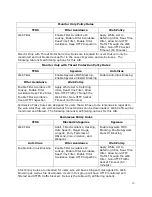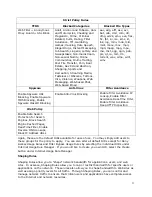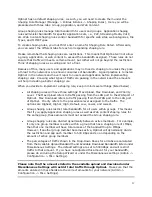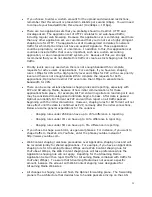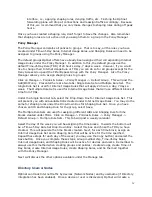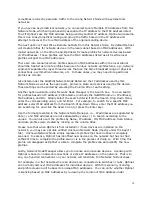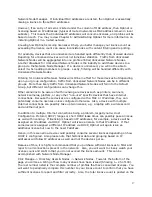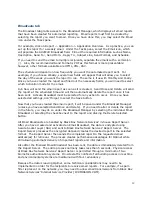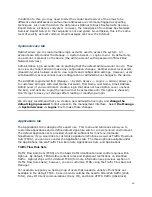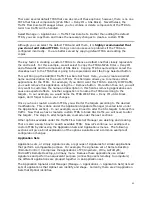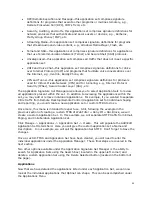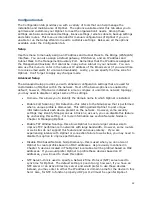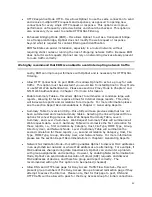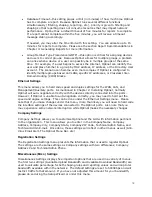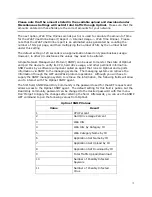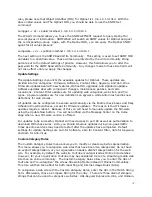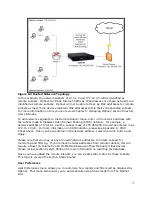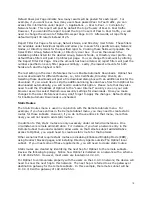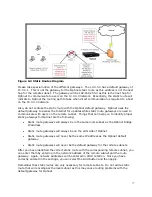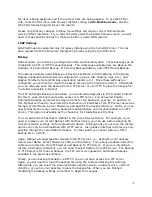
64
Like other menus under the Applications menu, this menu is intended for expert use. The
Applications menu will allow you to finish creating the custom TFRS. You can also finish
altering the Application Set to add or remove specific applications for an Application Set.
Lastly, this menu allows you to search for individual applications, values (ports), and
application sets to see how traffic is being categorized.
Click Manage -> Applications -> Applications. This will bring up the Application Signature
Manager. The Application Signature manager lists each individual application alphabetically
according to the Traffic Flow Rule Set listed in the top right-hand corner. You can also
search for a particular application based on the Name, Application Set, or Value and sort the
different applications by the column titles. Below are the column titles and corresponding
definitions:
•
Name—this is the name of the application.
•
Application Set—this will list which application set the application belongs under.
•
Type—this will list the type of signature identification used to recognize the traffic.
The different types are the following:
o
Destination Port—this type is the target port of the application.
o
Diff Serv—this type is the Differentiated Services (DiffServ) of the application.
DiffServ is a networking architecture that specifies a simple, scalable and
coarse-grained mechanism for classifying, managing network traffic and
providing Quality of Service (QoS).
o
Type of Service—this type is the Type of Service (TOS) of the application.
TOS is a single-byte field in an IP packet header that specifies the service
level required for the packet.
o
Length—this type is the Ethernet Length of the application. Ethernet length
specifies the size of the frame used within the network interface.
o
VLAN—this type is the Virtual Local Area Network (VLAN) used for the
application.
o
Protocol Only—this type is the protocol used for the application, i.e., TCP,
UDP, etc.
o
Layer7—this type is The Optinet Layer 7 signature used for the application.
o
Source and Destination Port—this type is the sending and target port of the
application.
o
Source Port—this type is the target port of the application.
o
XLi Engine—this type is the Cross Layer Intelligence (XLi) Engine used for the
application. XLi is the component of Optinet that scans and identifies packet
payload using 6 layers of the OSI model.
o
Web Request MIME Type—this type is the Multipurpose Internet Mail
Extensions (MIME) for the application.
o
Web Request File Type—this type is the File Type for the application.

